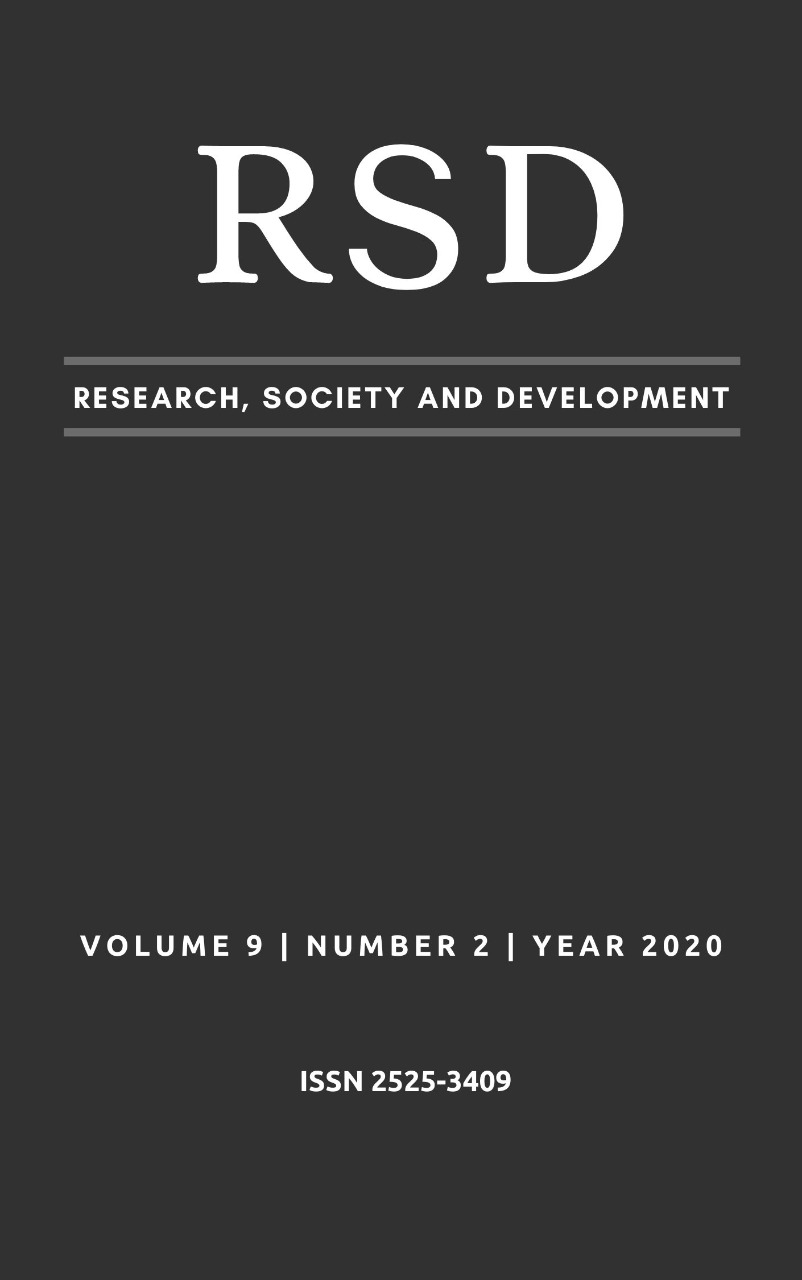O uso de medicamentos fitoterápicos como emagrecedores em uma cidade do Maranhão
DOI:
https://doi.org/10.33448/rsd-v9i2.2096Palavras-chave:
Obesidade, Atenção Farmacêutica, Anorexígenos.Resumo
Avaliar o uso de medicamentos fitoterápicos como emagrecedores na população do interior do Maranhão. Estudo exploratório descritivo retrospectivo, no período de janeiro de 2017 a dezembro de 2018, onde foram levantados todos os produtos fitoterápicos vendidos dentro período e identificados os utilizados como emagrecedores. Houve uma queda no total de 2018 em relação ao ano de 2017, os Fitoterápicos Gerais foram mais vendidos, com cerca de 90,57% e 9,43% de Fitoterápicos Emagrecedores. A proporção em 2018 não alterou de forma significativa, sendo 95,65% dos Gerais e 5,35% dos Emagrecedores. Os meses de 2017 onde houve mais Fitoterápicos Emagrecedores Dispensados foram: maio, agosto, junho, julho. No ano de 2018, os meses mais vendidos foram: janeiro, outubro, fevereiro e agosto respectivamente. O uso de medicamentos fitoterápicos sem orientação médica, apesar do consumo ter diminuído entre os dois anos, não reduziu os riscos que os emagrecedores podem causar na saúde desses usuários, visto que a maioria não tem feito exames de saúde regularmente, não faz dietas adequadas, entre outros motivos que influenciam no medicamento.
Referências
Associação Brasileira para o Estudo da Obesidade e da Síndrome Metabólica (2010). Diretrizes brasileiras de obesidade. Recuperado em 10 agosto, 2019, de: http://www.abeso.org.br/pdf/diretrizes_brasileiras_ obesidade_2009_2010_1.pdf
Melo, C. M., Oliveira, D. R. (2011). O uso de indicadores de apetite por mulheres: um olhar a partir da perspectiva do gênero. Revista de Ciências e Saúde coletiva. São José do Rio Preto, p. 2523-2532.
Pelizza, M. C. (2010). Uso de Cereus sp. e CordiaecalyculataVell como emagrecedores: uma revisão. UFRGS. Porto Alegre.
Weintraub, M., Sundaresan, P. R., Madan, M., Schuster, B., Balder, A., Lasagna, L. & Cox, C. (1992), Long‐term weight control study I (weeks 0 to 34). Clinical Pharmacology & Therapeutics, 51: 586-594.
Silveira, P. F., Bandeira, M. A. M., Arrais, P. S. D. (2008). Farmacovigilância e reações adversas às plantas medicinais e medicamentos fitoterápicos: uma realidade. Revista Brasileira Farmacognosia., v.18, n.4, p.618-626.
Salomão, A., Lima, F. (2018). Análise de crises passadas indica que Brasil vive pior retomada da história. Folha de S. Paulo. São Paulo. Recuperado em 10 Setembro, 2019, de https://www1.folha.uol.com.br/mercado/2018/05/analise-de-crises-passadas-indica-que-brasil-vive-pior-retomada-da-historia.shtml.
Agência Nacional de Vigilância Sanitária. (2018). Medicamentos fitoterápicos e plantas medicinais. Recuperado em 12 Setembro, 2019, de http://portal.anvisa.gov.br/fitoterapicos.
Guerra E. S., Arent M. D., Machado M. (2010). Fitoterapia no controle e prevenção da obesidade. Universidade do Vale do Itajaí. Itajaí (SC). Recuperado em 25 Setembro, 2019, de http://siaibib01.univali.br/pdf/Elimara%20Sales%20Guerra%20e%20Michele%20Daiane%20Arent.pdf
Lessa, M. de A., Bochner, R. (2008). Análise das internações hospitalares de crianças menores de um ano relacionadas a intoxicação e efeitos adversos de medicamentos no Brasil. Revista Bras. Epidemiol, v.11, n.4, p.660–674.
Associação Brasileira de Redes de Farmácias e Drogarias. (2018) Índices Abrafarma 2018. Recuperado em 25 Setembro, 2019, de https://docs.wixstatic.com/ugd/03661a_519adf8c70ef4a2b81 b3146f177f02fa.pdf
One, G. M. da C., Albuquerque, H. N. de. (2017). Saúde e Meio Ambiente: os desafios da interdisciplinaridade nos ciclos da vida humana. (4. Ed). Campina Grande: Ibea - Instituto Bioeducação, Cap. 8, p. 134-187.
Vizzotto, M., Castilho, P. M., Pereira, M. C. (2009). Compostos bioativos e atividade antioxidante em cálices de hibísco (Hibiscus sabdariffa L.). Comunicado técnico 213. Pelotas, RS: Embrapa.
Vizzotto, M., Pereira, M.C. (2008). Hibisco: do uso ornamental ao medicinal. Recuperado em 03 Outubro, 2019, de http://www.infobibos.com/Artigos/2008_4/hibisco/index.htm
CasaClique. (n.d.). Farinha Seca Barriga – O Que É, Efeitos Colaterais, Emagrece Mesmo? Recuperado em 03 Outubro, 2019, de https://casaclique.wordpress.com/2018/02/10/farinha-seca-barriga/
Downloads
Publicado
Edição
Seção
Licença
Autores que publicam nesta revista concordam com os seguintes termos:
1) Autores mantém os direitos autorais e concedem à revista o direito de primeira publicação, com o trabalho simultaneamente licenciado sob a Licença Creative Commons Attribution que permite o compartilhamento do trabalho com reconhecimento da autoria e publicação inicial nesta revista.
2) Autores têm autorização para assumir contratos adicionais separadamente, para distribuição não-exclusiva da versão do trabalho publicada nesta revista (ex.: publicar em repositório institucional ou como capítulo de livro), com reconhecimento de autoria e publicação inicial nesta revista.
3) Autores têm permissão e são estimulados a publicar e distribuir seu trabalho online (ex.: em repositórios institucionais ou na sua página pessoal) a qualquer ponto antes ou durante o processo editorial, já que isso pode gerar alterações produtivas, bem como aumentar o impacto e a citação do trabalho publicado.


